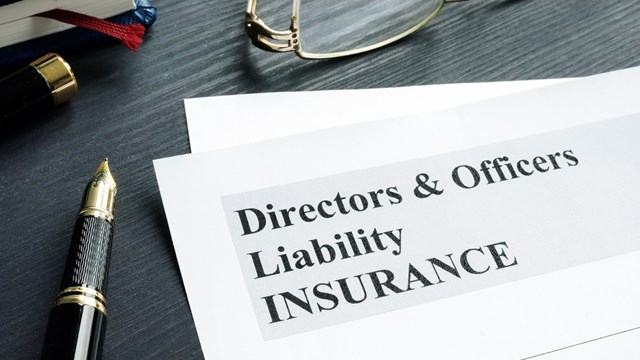
Most homeowners love the idea of having a swimming pool, athletic court or health club as part of their association’s grounds because it adds value to their property and it gives them something fun to do throughout the year. But HOAs that offer these additional features are responsible for having supplemental insurance to cover the liabilities they bring.
Insurance Concerns
When it comes to potential high-risk amenities like pools and gyms where the chance of injury is high, basic liability coverage just doesn’t do the trick. All insurance policies are not created equal, and getting proper coverage for your association’s amenities is crucial.
“One HOA’s amenity may not increase their premium at all, whereas the same amenity would increase a premium in another HOA,” says Charles “Cappy” Stults, president and C.E.O. of Allen & Stults Co. Inc., an insurance brokerage based in Hightstown. “For instance, a pond in an adult community might not be of concern for an insurance underwriter, but an identical pond in a non-age restricted association would increase their cost. If it was next to a playground, it might even constrict coverage availability.”
According to Karyl Dicker Foray, CIRMS, CRIS for Rosenthal Brothers, Inc., liability policies can include coverage for various items such as a slip and fall exposure, products liability if someone gets ill because of tainted food at an association sponsored event, host-liquor liability and medical payments to guests of the association and its unit owners.
“A condominium association provides insurance outside walls of habitational buildings, plus common areas (such as grass and walkways) surrounding the buildings,” she says. “Coverage should also be included for a club house, gazebo, pool, storage area, parking, tennis court and any other areas owned by the association.”
Generally the amenities, also known as the common elements, will be defined in the sales brochures and are defined in cooperative apartments in the occupancy agreement. This document is also known as the proprietary lease. For condominium associations the common elements would be defined in the condominium declarations.
“The building amenities are collectively owned by the unit owners, which is why they are referred to as common elements. A separate policy needs to be in force to cover this exposure,” says Joel A. Davis, regional marketing director for Community Association Underwriters of America, Inc. “The coverage from an individual homeowners policy would be inadequate to cover all of the common elements. Ideally, the insurance agent for a homeowner should make certain that the homeowners policy only covers the unit owners’ property and that there are no gaps in coverage.”
Common elements include recreational facilities, swimming pools, playgrounds, kitchens, party rooms, exercise rooms, walk ways, riding paths, and the like.
The Deep End
Swimming pools are of most concern to insurers because they raise an HOA’s premiums significantly. Since pools are also one of the most popular amenities, boards need to be aware of the insurance issues involved.
Underground pools, for example, might not have coverage under basic liability because many insurance companies exclude property underground, says Thomas H. Heist IV, president of Thomas Heist Insurance Agency with multiple offices throughout New Jersey.
“I try to keep it simple in this way,” Heist continues, “The board needs to make sure the liability is protected. Essentially, an injury by the public in a common space that is maintained by the association—whether it’s slipping near the pool or tripping on a walkway—that’s the association’s liability.”
There are ways for HOAs to limit their liability and reduce their premiums if they operate their amenities properly. Using good risk-management techniques and making prudent decisions are the first steps in controlling losses.
“Risk can never be totally avoided,” says Stults. “Procuring insurance, however, is not the sole method of risk transfer. Use of qualified, fully insured independent contractors can control and transfer losses, and thus reduce premiums.”
Professional, fully insured pool maintenance and lifeguard contractors are used to control pool premiums. There are also contractors for gyms, snow removal, and grounds maintenance.
“But sometimes doing it yourself is preferable, depending on the amenity, users, controls and prior loss experience,” Stults adds. “Legal counsel should be consulted to advise how bylaws and other agreements can be drafted or amended to limit the liability to the extent allowed by law.”
Slippery When Wet
When it comes to pools, proper signage should always be prominently displayed, explaining the rules of the pool, and all town ordinances should be followed. It’s important to document everything, including maintenance records, because as Lori Long of Community Association Underwriters in Newtown, Pennsylvania says, “It’s the simplest things that can take you down.”
“You want to limit the people going to the pool to members and guests, make sure no one is swimming by themselves, make sure that after hours when the pools aren’t used that rules are clearly posted and there are safety measures available,” says Vincent Hager, president at JGS Insurance in Holmdel.. “We are seeing a lot more of associations having the public access defibrillators on hand as well, and getting training.”
Nowadays, Hager continues, most insurance companies simply won’t write a diving board exposure—or they will charge extra if they do. Slides are also a concern, but again, if you have a slide, post a sign that says “feet first only” because kids have an alarming propensity to go down water slides headfirst.
Money Matters
There are really no set standards or rules of thumb for choosing liability limits, and breadth of coverage varies from company to company and should be carefully compared by a trusted insurance professional.
“Clearly, however, those HOAs with facilities where multiple individuals can be injured by the same occurrence [meeting rooms and owned vehicles are good examples] should have higher limits than an HOA that only owns vacant land,” Stults says. “You should always remember that one of the major benefits of liability insurance is the defense cost provisions. If damages being sought exceed an HOA’s limits, this benefit is reduced.”
In addition to a regular liability policy, there are also umbrella policies and riders that should be purchased to counter any potential problems.
Hager also explains that most policies start with $1 million, but his company recommends an umbrella policy of $15 million, and also a directors and officers—or D&O—policy. “Depending on the makeup of the community, sometimes you can go even higher,” he says. “You can easily go with $25 million, $50 million, even $100 [million].”
Most times, riders are included in the policy itself, but again, it depends on the carrier writing the program. All carriers do different things, and the board needs to have a conversation to make sure specific amenities are covered on the selected policy.
In Touch
There needs to be continual open dialogue between the leaders and staff of a community with the “works” and their insurance advisor.
“You don’t want misrepresentation of risk,” Heist says. “You want to make sure the insurance company is aware of different amenities and exposures. At the end of the day, it’s about protecting your residence and residents.”
Share the Wealth—and the Cost
When extra insurance is needed for these amenities, the cost is absorbed mostly through maintenance fees and assessments.
“It’s usually spread out among all unit owners, whether they are members of the gym or pool or not,” says Hager. “It depends on the place though. It could be equal across the board, or could be based on square footage of a condo or co-op.”
Risk management consultants are also available for providing HOA boards and/or management with getting the best deal for their insurance dollar.
“Associations usually get three bids and compare them and the consultants can tell people where the gaps are,” Long says. “Most insurance agents themselves can do that and they can save the cost.”
Remember, merely receiving certificates of insurance and insurance policies does not assure an HOA that insurance exists for all amenities or operations. In the end, most boards and associations must strike a balance between the amenities they offer their residents and the expense and potential liability those amenities represent—not only to the board, but to every member of the HOA.
With good professional advice, attention to policy details, and regular reviews, any HOA can have the amenities that attract new owners, while ensuring the community is protected by the proper insurance coverage.
Keith Loria is a freelance writer and a frequent contributor to The New Jersey Cooperator.






Leave a Comment